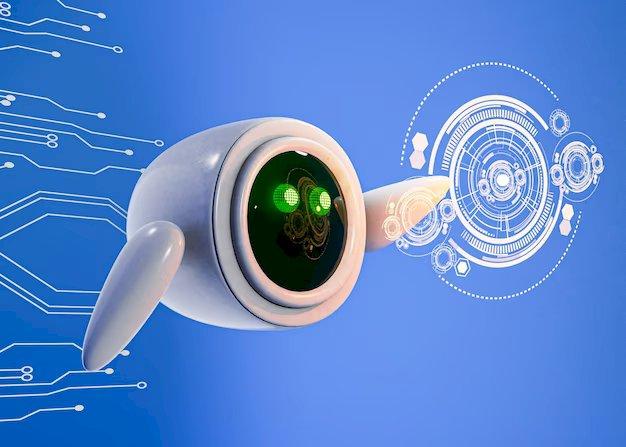AI in Robotics: Building Intelligent Machines
Explore the transformative role of AI in robotics, from autonomous vehicles and drones to industrial automation. Discover how AI-powered robots are reshaping industries and enhancing collaboration between humans and machines. Join us on a journey into the world of intelligent machines and the future of AI-driven robotics.

Introduction
The convergence of Artificial Intelligence (AI) and robotics is ushering in a new era of intelligent machines. From autonomous vehicles and drones to industrial automation, AI is transforming the capabilities of robots. In this comprehensive guide, we'll explore the role of AI in robotics, the technologies that make it possible, and the applications that are reshaping industries. Join us on a journey into the world of intelligent machines and discover how AI is revolutionizing robotics.
Chapter 1: The Intersection of AI and Robotics
AI and robotics share a symbiotic relationship:
-
AI-Powered Perception: AI enables robots to interpret data from sensors, cameras, and other sources, providing context and awareness.
-
Learning and Adaptation: Robots can use AI to learn from their experiences and adapt to changing environments.
Chapter 2: Autonomous Vehicles: The Future of Transportation
AI is driving the development of self-driving cars and other autonomous vehicles:
-
Sensors and Perception: AI processes data from LiDAR, radar, and cameras to navigate and make real-time decisions.
-
Safety and Efficiency: Autonomous vehicles promise safer roads, reduced traffic congestion, and increased energy efficiency.
Chapter 3: Drones: Beyond the Sky's Limit
Drones equipped with AI have expanded their capabilities:
-
Autonomous Flight: AI enables drones to fly autonomously, avoiding obstacles and adapting to changing conditions.
-
Applications: Drones find applications in agriculture, environmental monitoring, surveillance, and even package delivery.
Chapter 4: Industrial Automation: The Rise of the Robots
AI-driven robots are transforming industries:
-
Manufacturing: Robots with AI vision systems enhance precision and efficiency on factory floors.
-
Logistics: AI-powered robots automate warehouse operations, including sorting and picking.
Chapter 5: AI in Human-Robot Collaboration
AI fosters collaboration between humans and robots:
-
Cobots: Collaborative robots work alongside humans, enhancing productivity and safety.
-
AI Assistants: Robots equipped with AI assist healthcare professionals and improve patient care.
Chapter 6: The Challenges and Ethical Considerations
AI in robotics poses challenges and ethical dilemmas:
-
Safety: Ensuring that AI-driven robots operate safely in various environments is paramount.
-
Ethical Use: Addressing concerns about the ethical use of AI in robotics, including potential job displacement.
Chapter 7: The Future of AI in Robotics
The future is bright for AI-powered robots:
-
Space Exploration: Robots with AI will play a significant role in space exploration and colonization.
-
Healthcare: AI-driven robots will assist with surgeries, elderly care, and rehabilitation.
Conclusion
AI is propelling robotics into a new era of intelligent machines, transforming industries, and enhancing our daily lives. From self-driving cars and drones that soar the skies to robots that collaborate with humans, AI is the driving force behind these technological advancements. However, as AI continues to shape the field of robotics, it's essential to address the challenges and ethical considerations to ensure safe and responsible deployment. The future of robotics promises even more exciting possibilities, from space exploration to healthcare, as AI-driven robots continue to push the boundaries of what's possible in the world of automation and intelligent machines.

 bloggeramar
bloggeramar 
































